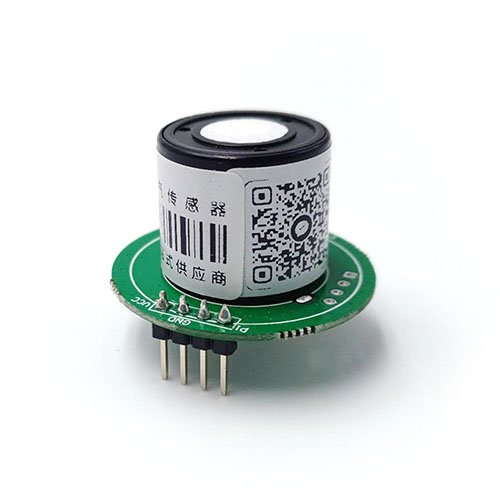Smart home gas sensor application progress in home appliances
Sensors support the entire smart home control system, equivalent to the entire system of “nerve endings”, the transmission of information, command intelligence are of great significance, in order to maintain a comfortable, environmentally friendly, safe environment, sensors play a role in the smart home monitoring and control center to provide data to improve the automation level of the smart home. In order to keep the environment comfortable, environmentally friendly and safe, sensors play the role of monitoring and providing data for the control center in smart home, which improves the automation level of smart home. This paper mainly introduces the Smart home gas sensor in the field of home appliances preservation, cooking, health monitoring and other intelligent scenarios show a lot of potential applications.

Application of Gas Sensor in Smart Refrigerator Freshness Preservation
In the process of food preservation, due to its own respiration and enzymatic reaction, or the role of external microorganisms, the macromolecular substances in the ingredients are gradually degraded and release unacceptable odors. Therefore, the use of gas sensors to monitor the freshness of food storage is getting more and more attention from refrigerator manufacturers. For refrigerator application scenarios, the change of gas when different food quantities and multiple food types are mixed will affect the determination of food freshness. In addition, due to the complexity of the actual use of the refrigerator scene, such as: the user to open and close the door, the compressor start and stop, the internal air circulation and so on will also affect the identification of the sensor.
Research results in recent years have shown that whether it is a single sensor for odor concentration monitoring or a gas sensor array combined with pattern recognition methods for food freshness discrimination, these attempts have achieved better recognition results. However, most of these studies can only achieve the discrimination of freshness when a single ingredient is stored, and in the actual refrigerator storage scenarios, due to the diversity and complexity of the stored food types, the mutual interference of the volatile gases of multiple ingredients increases the difficulty of data modeling, resulting in the discrimination of food freshness in the actual preservation scenarios can not be done to determine what kind of food deterioration occurs or is going to occur in those scenarios, and the gas release patterns in these scenarios need to be more deeply investigated. The gas release pattern in these scenarios needs more in-depth research.

Gas sensors in cooking applications
Cooking scenarios are another important scenario where gas sensors may be applied. Compared to preservation, cooking scenarios are usually more homogeneous, with no multiple foods being cooked at the same time, which makes data modeling less difficult. However, to complicate matters, the high temperatures, fumes, and water vapor generated during cooking all have an impact on the sensors, making them susceptible to “poisoning”.
In fact, the composition of the cooking process produces hundreds of gas compounds, the main gas components are particulate matter, alkanes, aromatic compounds, aldehydes, ketones, alcohols, olefins and other volatile organic compounds and semi-volatile organic compounds such as polycyclic aromatic hydrocarbons.
In such cooking scenarios with complex gas compositions, gas sensor arrays show more prominent advantages than single sensors. Research results in recent years have shown that gas sensor arrays have a promising future in the cooking field, such as determining the cooking status of cooked or fried foods based on individual tastes, and serving as an auxiliary dietary monitoring tool to report cooking habits to the user on a regular basis.
Application of gas sensors in health monitoring
As an important development direction of smart home appliances, monitoring human health status through home appliances is also inseparable from the support of various sensors. Compared to the more mature applications in refrigerators and cooking devices, the application of gas sensors in health monitoring is still at an early stage, which may be related to the fact that the related data collection work is more difficult. Human exhaled gas contains a number of volatile gas components, and specific biomarkers in these volatile gas components can be used as important information to indicate human health, suggesting possible signs of disease in specific systems or organs. Although home appliances, unlike medical devices with disease diagnostic functions, do not focus on early disease diagnosis, there are still many potential application scenarios for gas sensors in the field of daily home health testing.
As more and more home health needs emerge, the low cost, non-invasive and miniaturization advantages of gas sensor arrays make them increasingly likely to be found in home appliances such as oral care appliances and smart toilets as an auxiliary monitoring and real-time surveillance solution, I believe.






